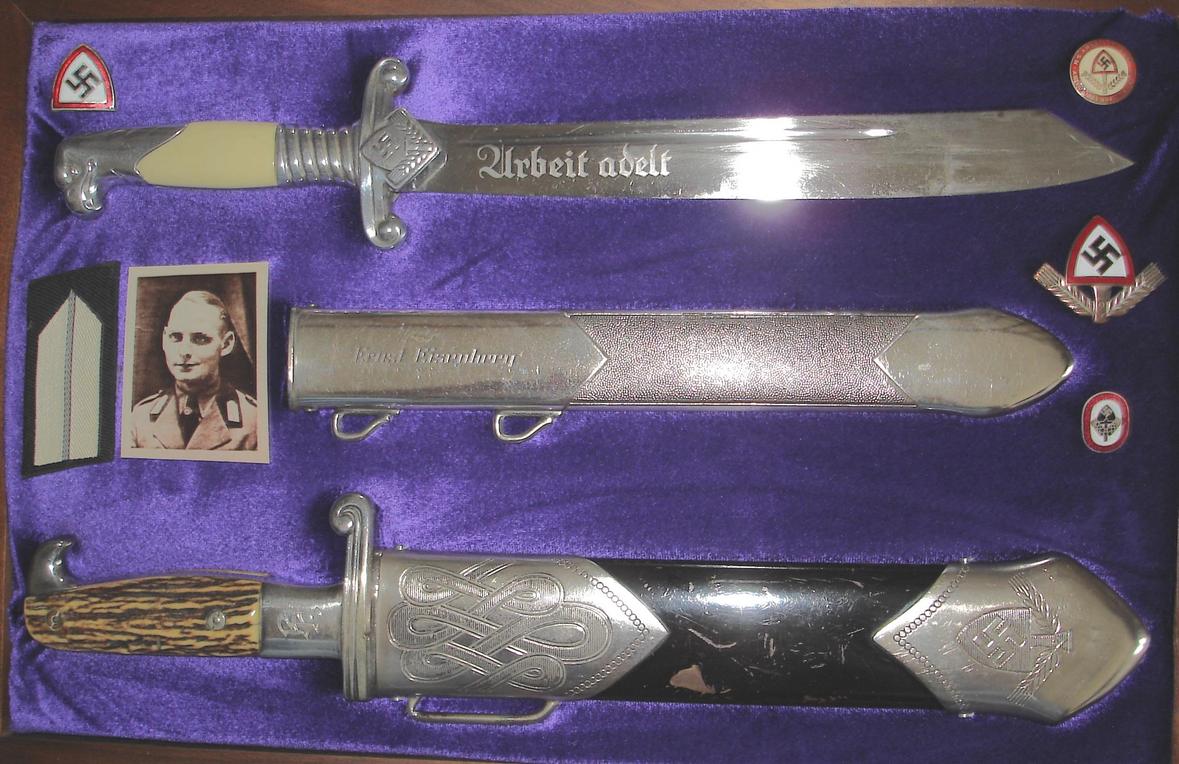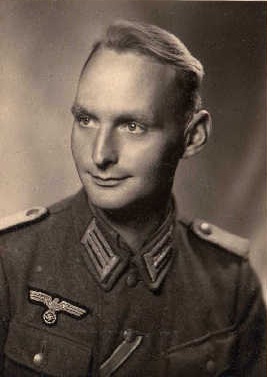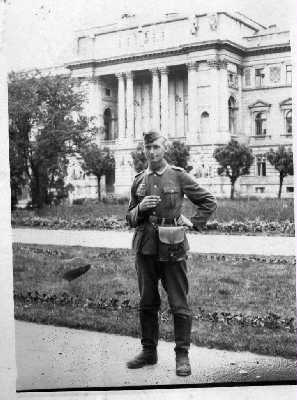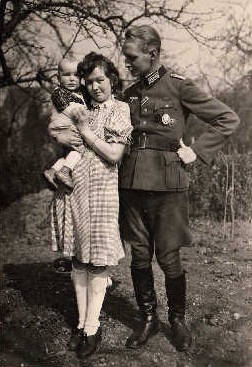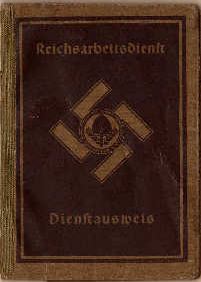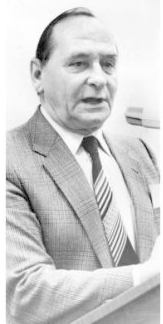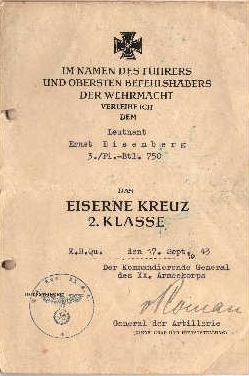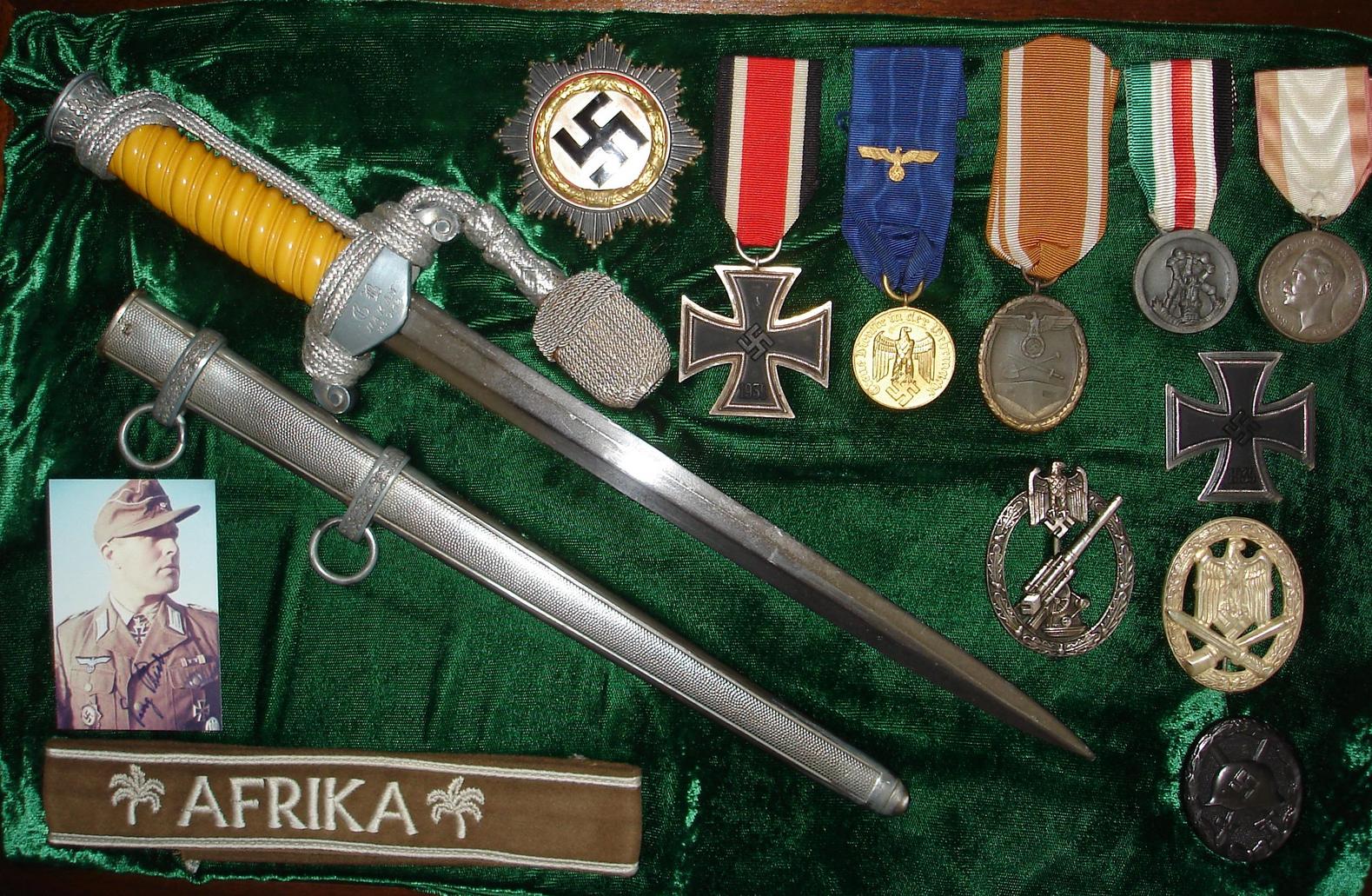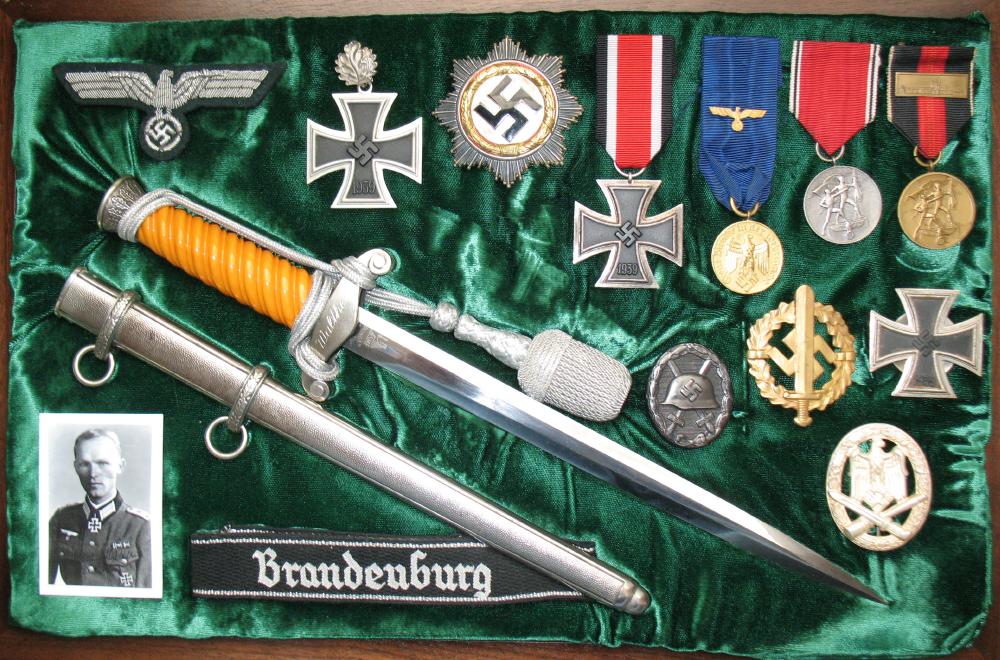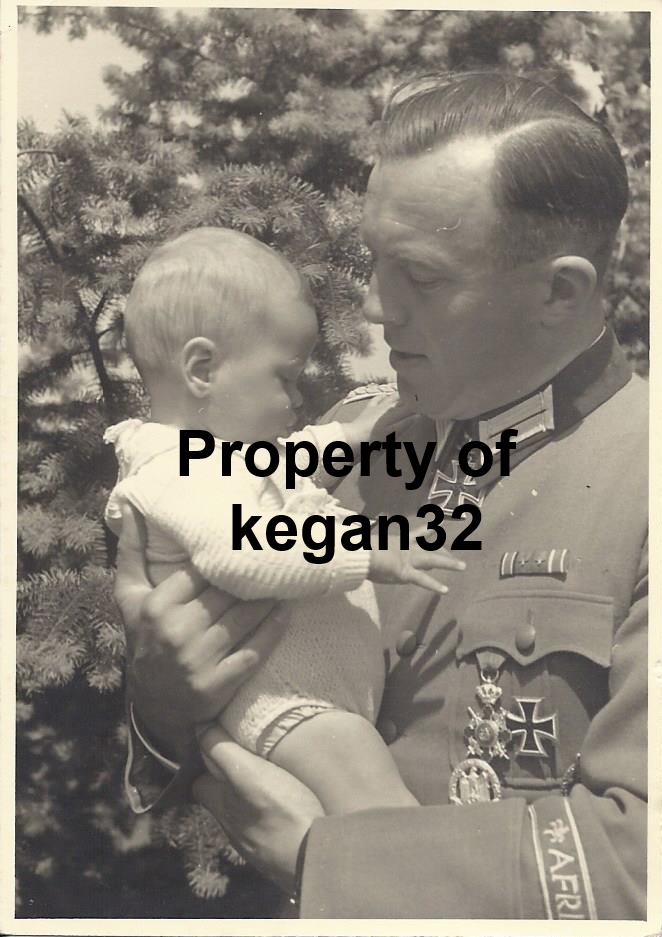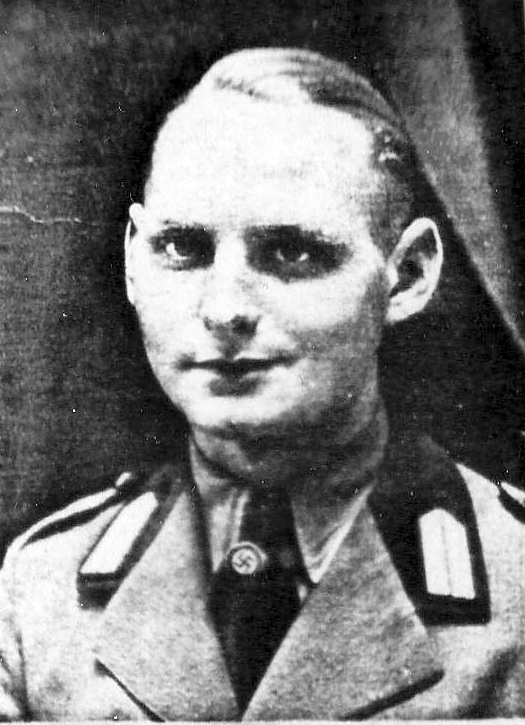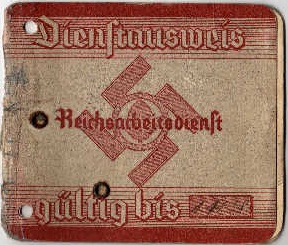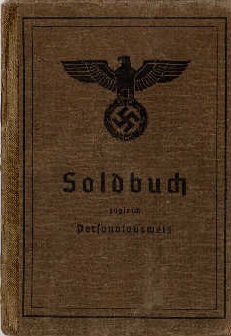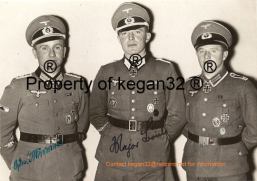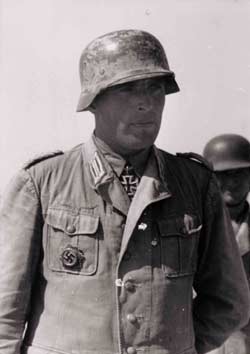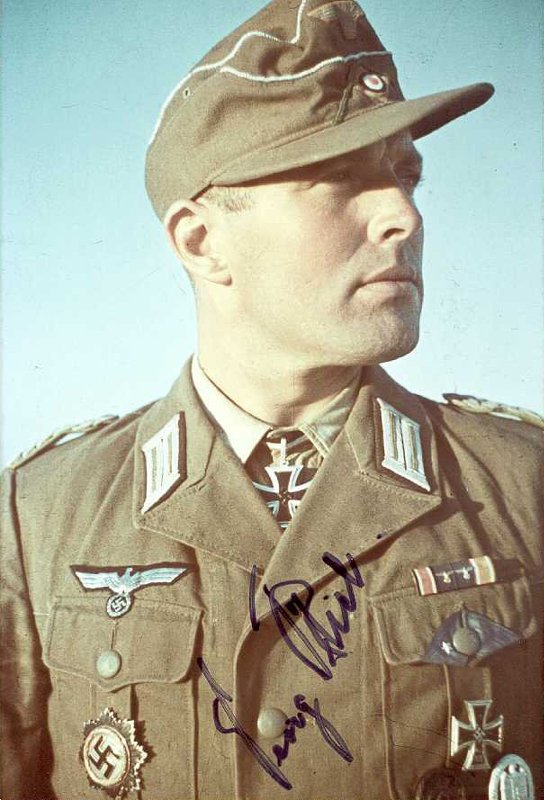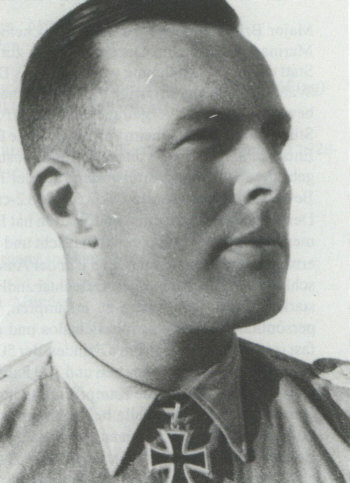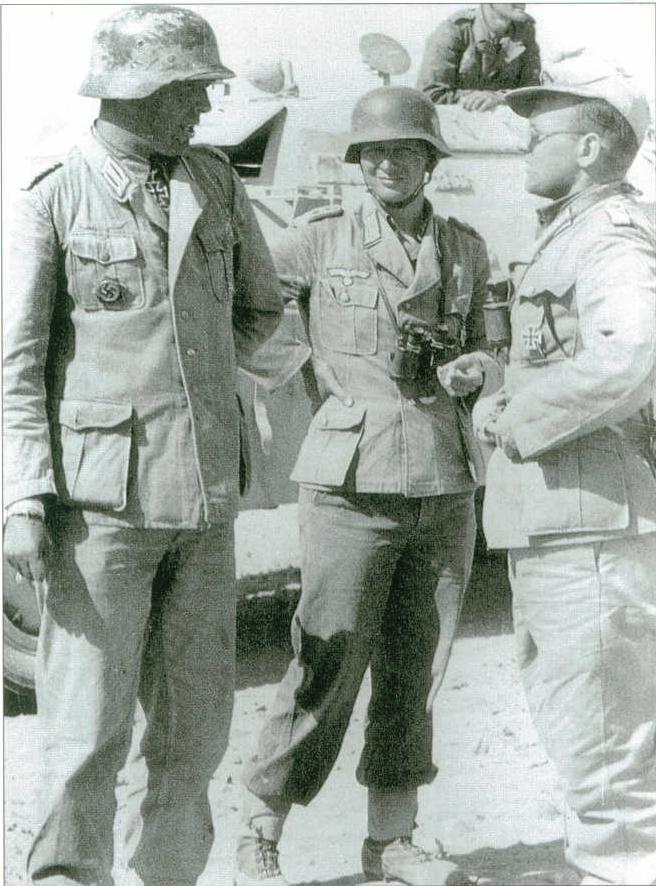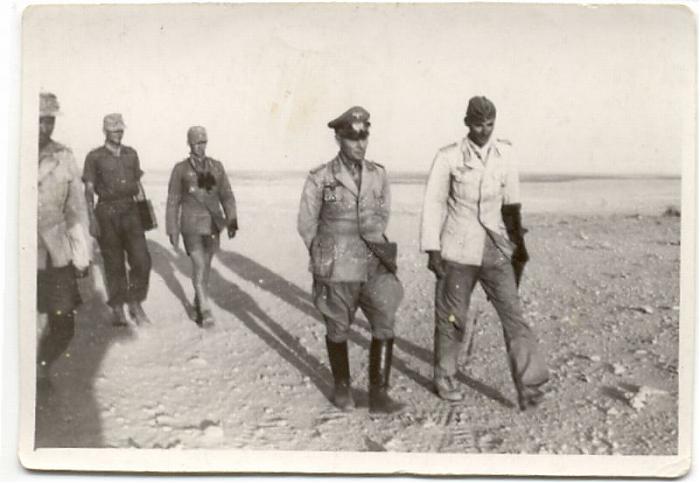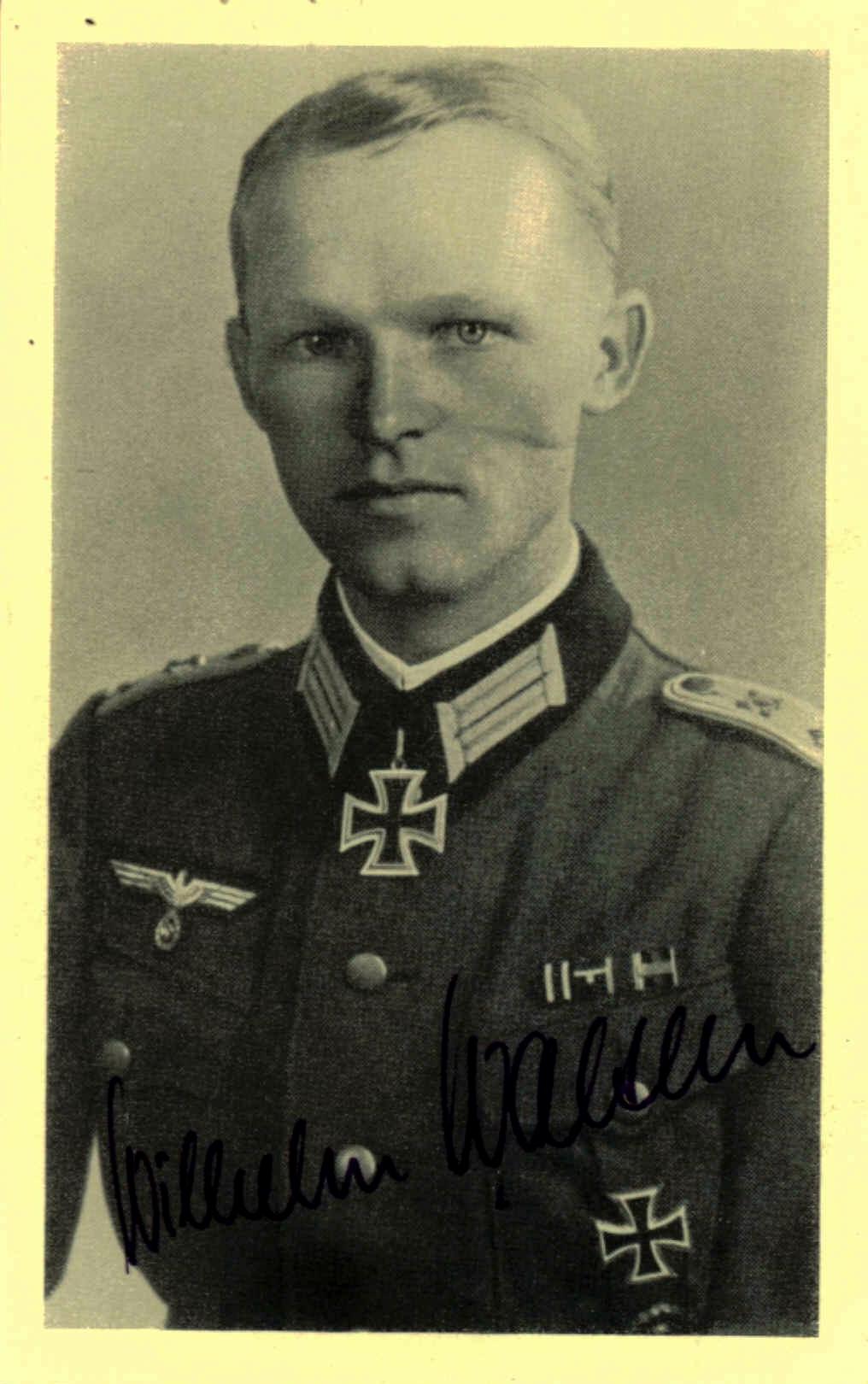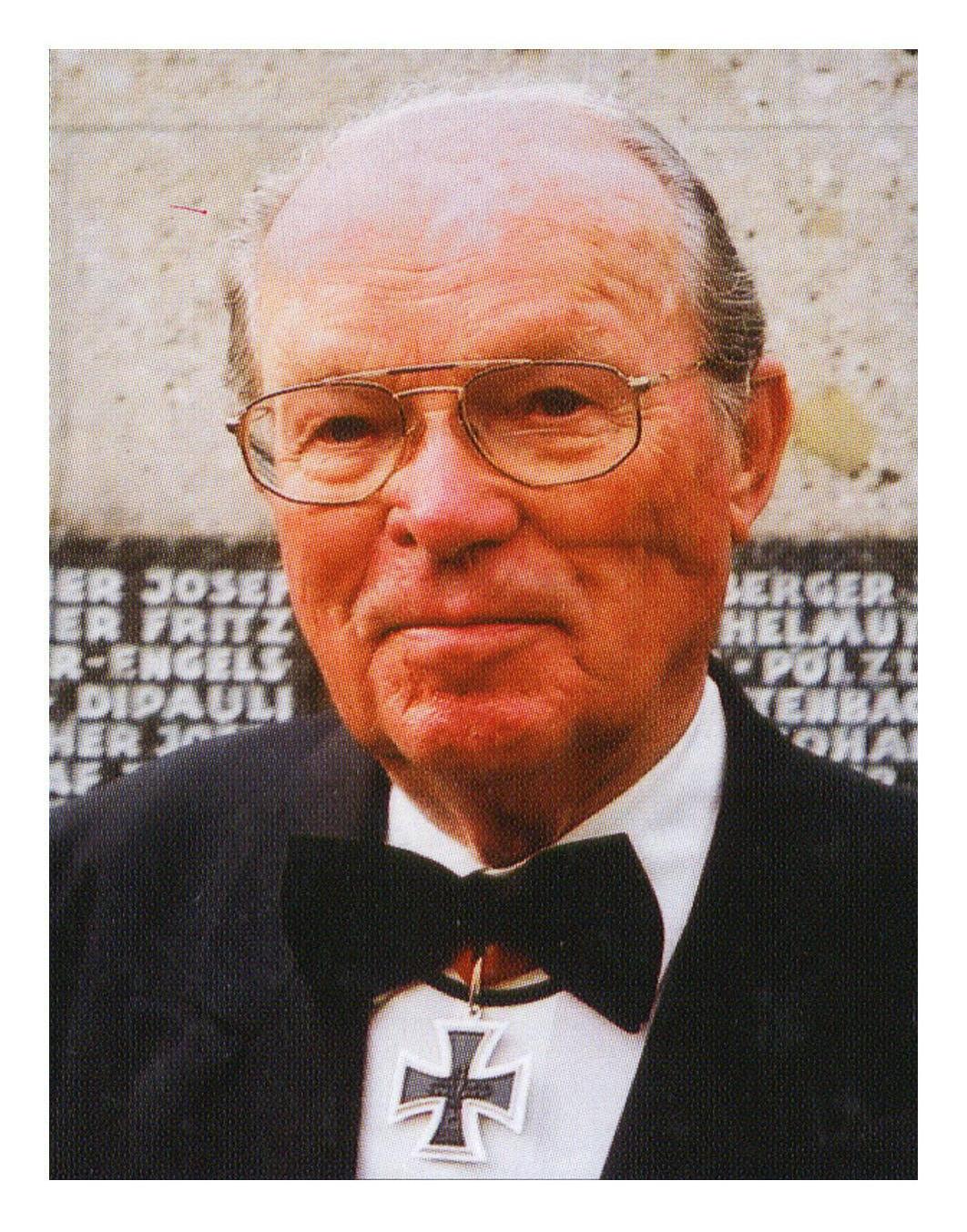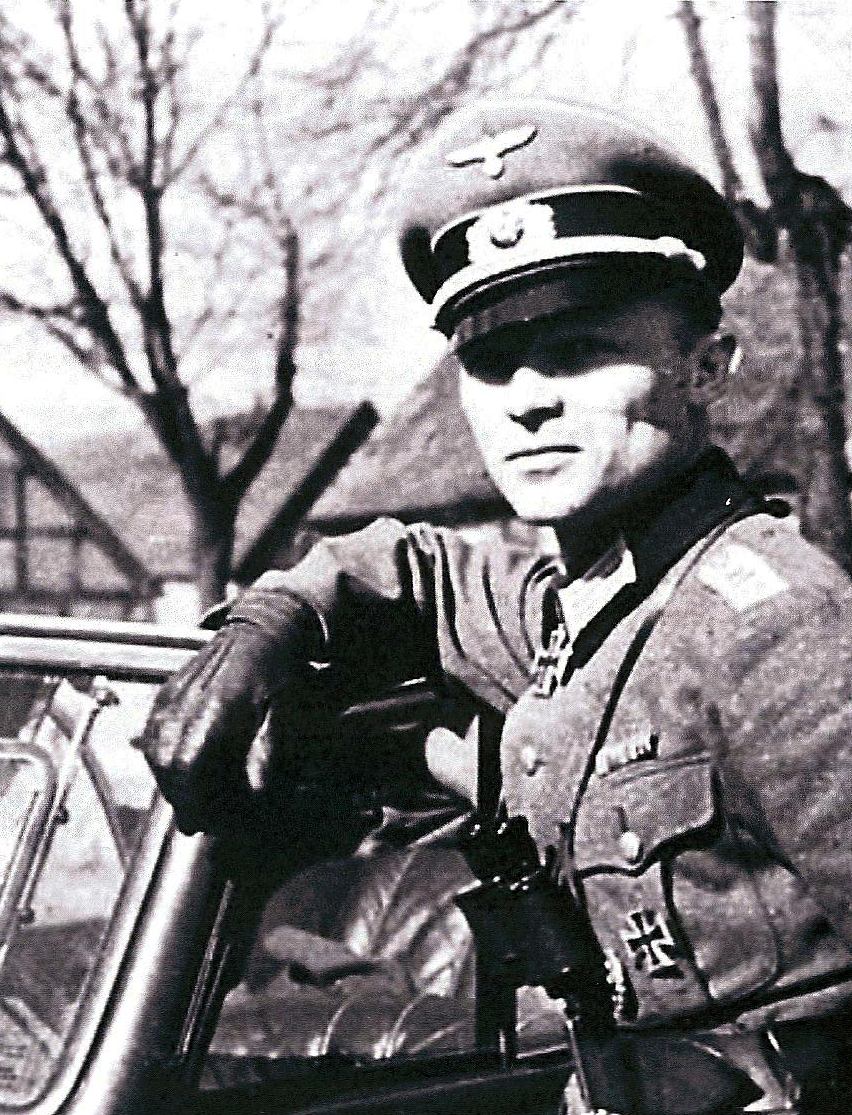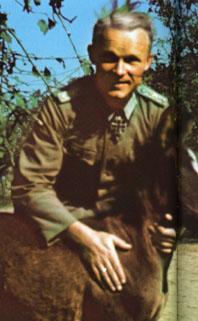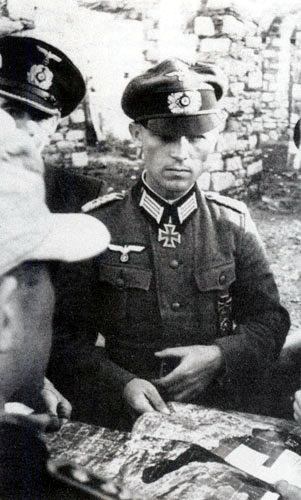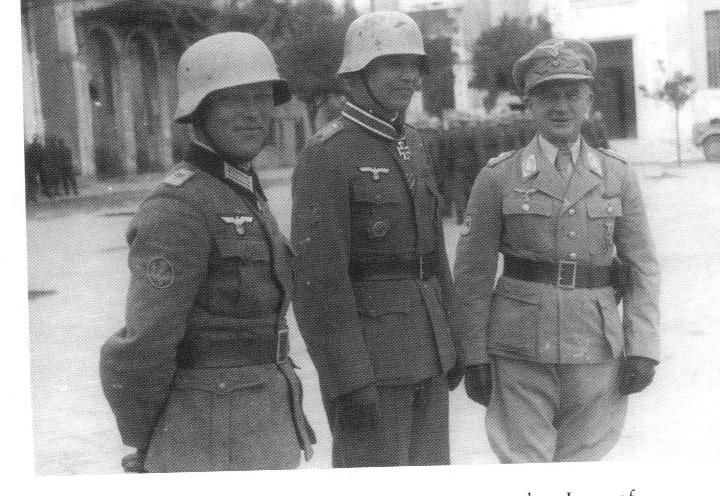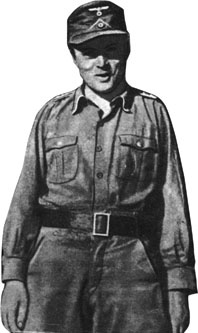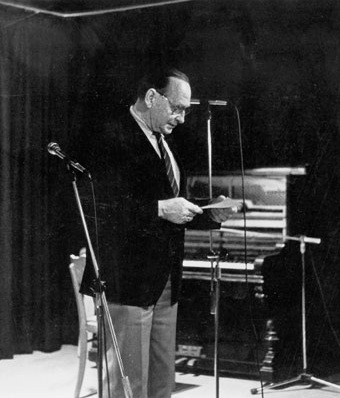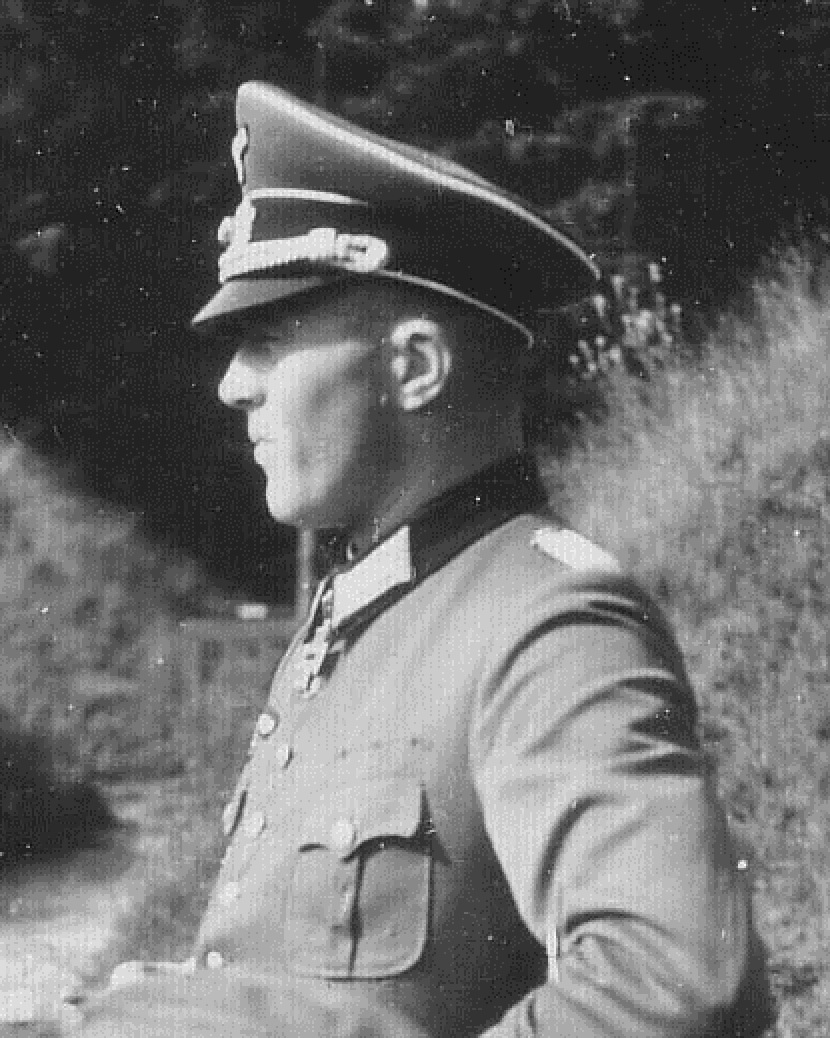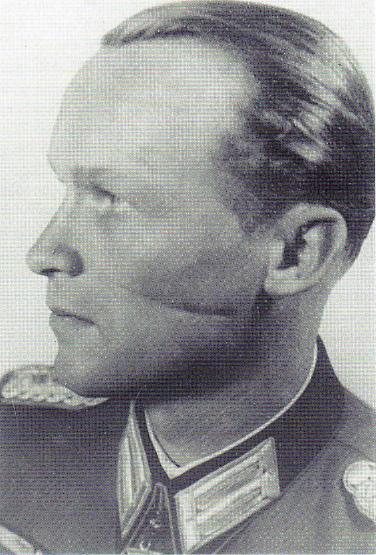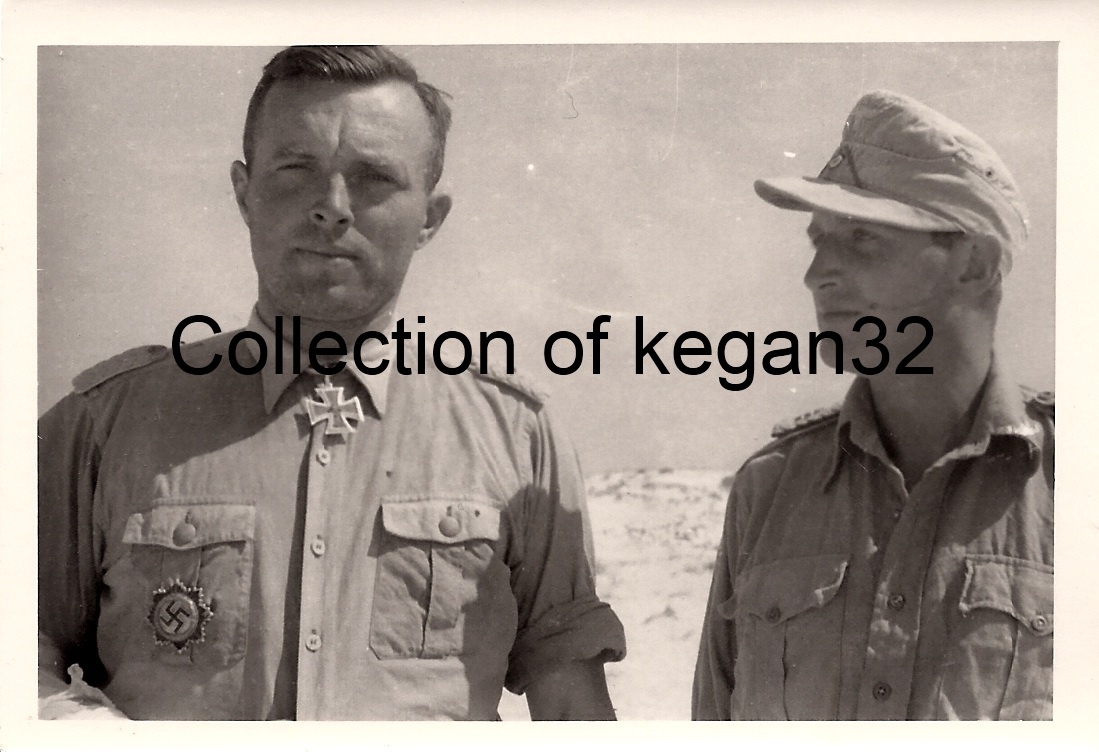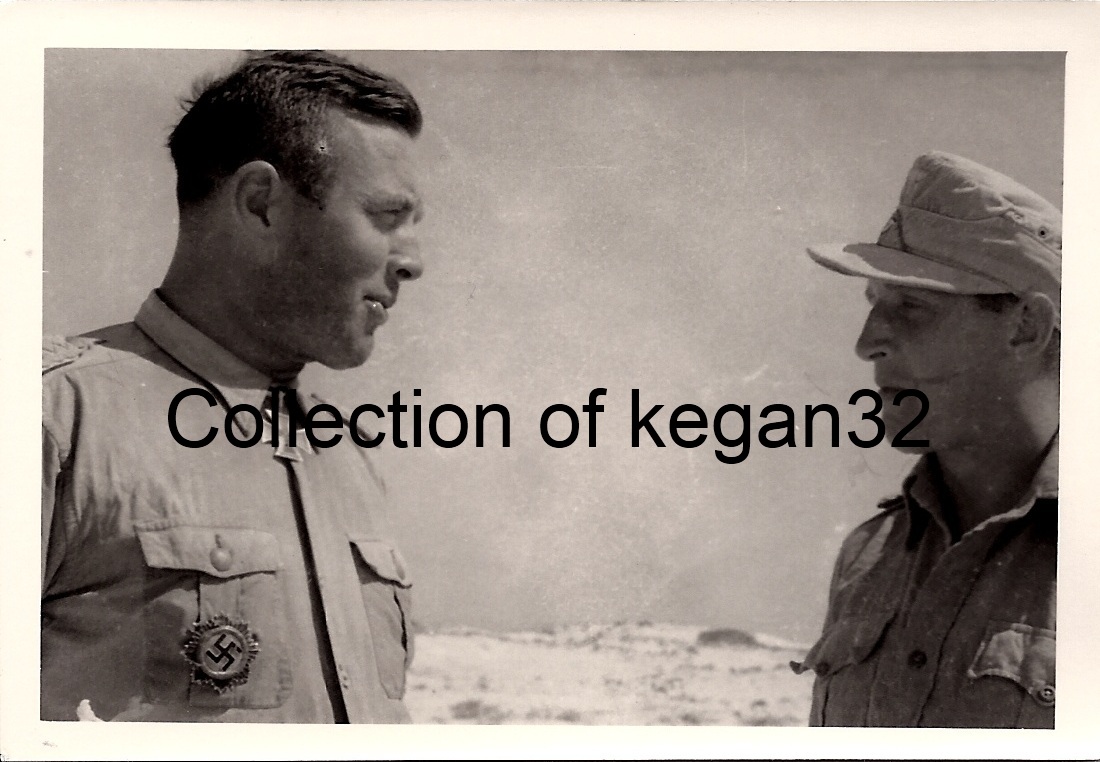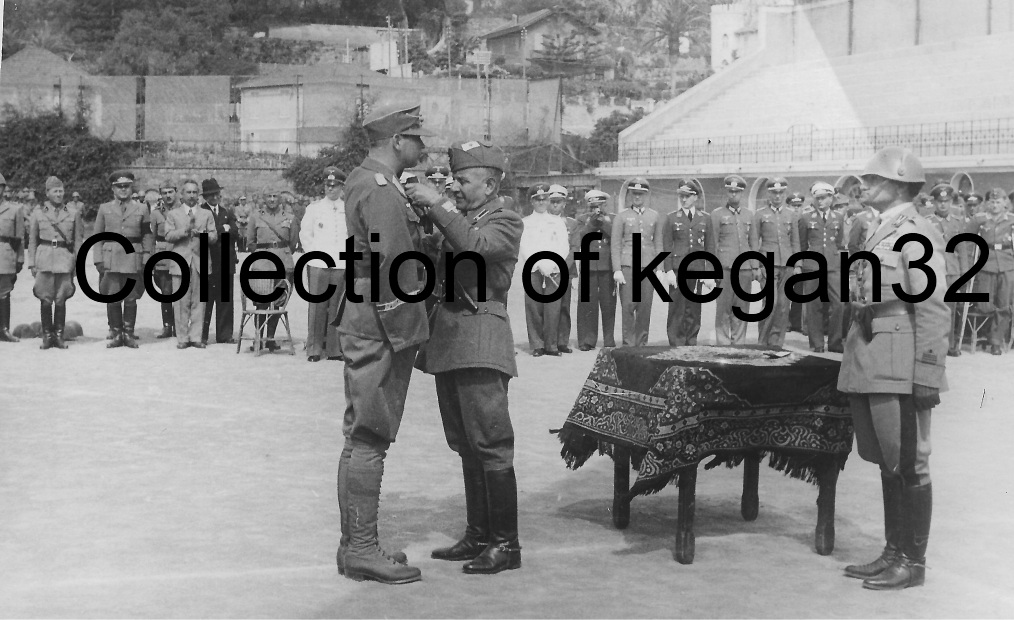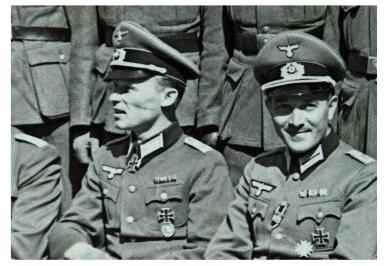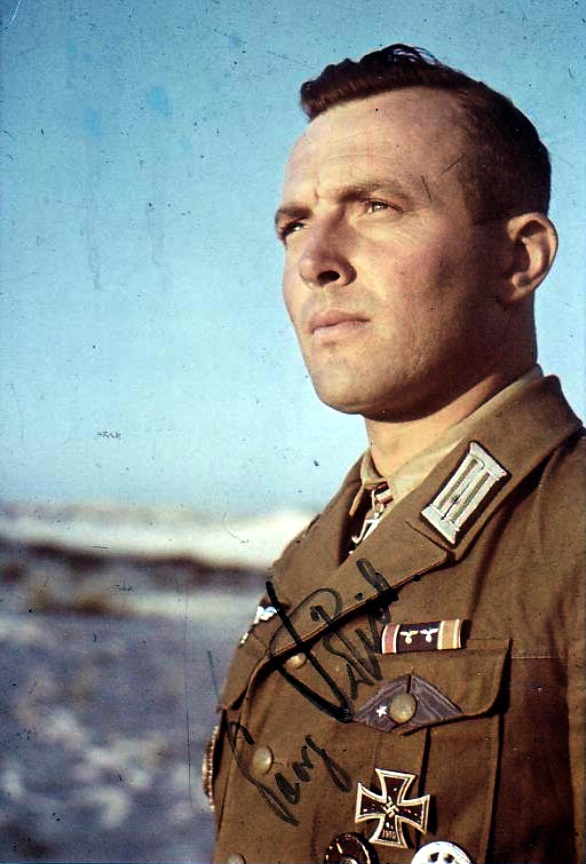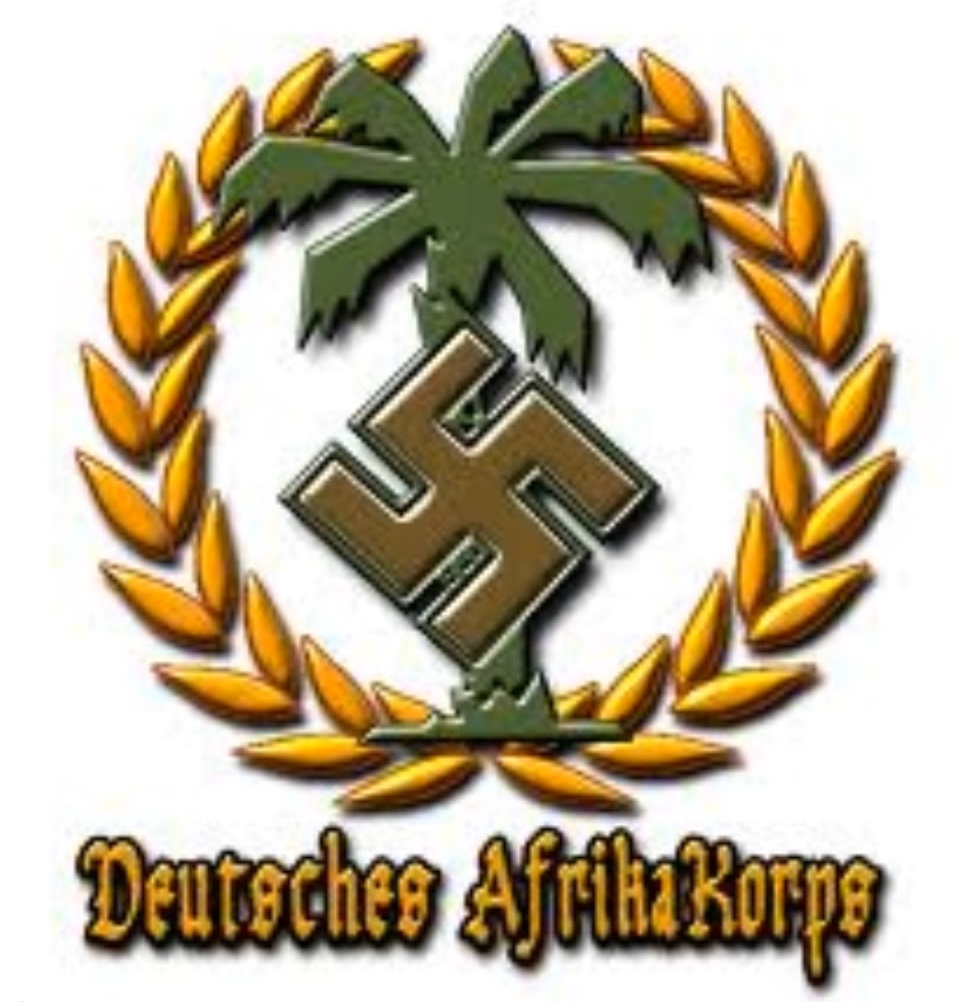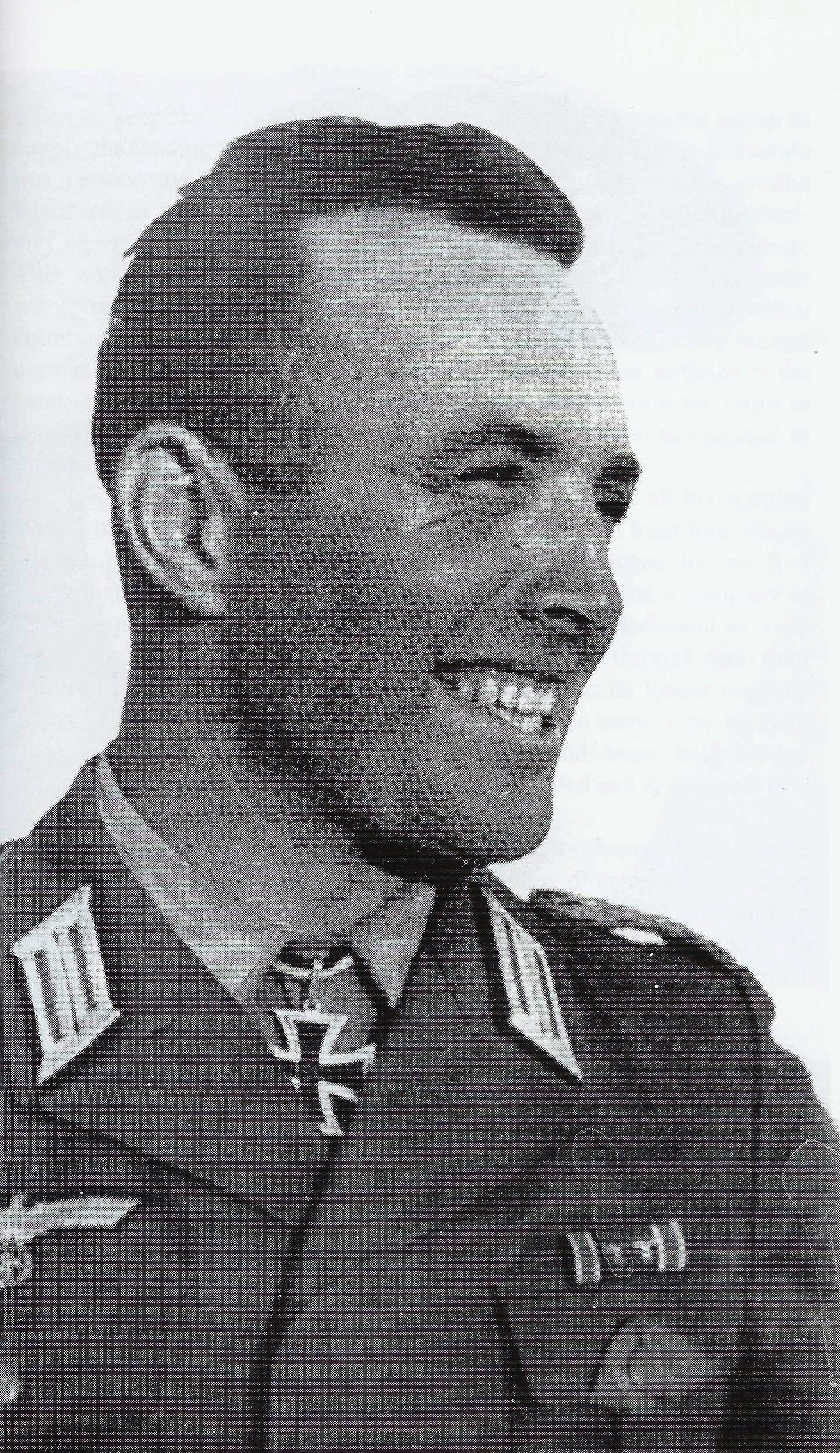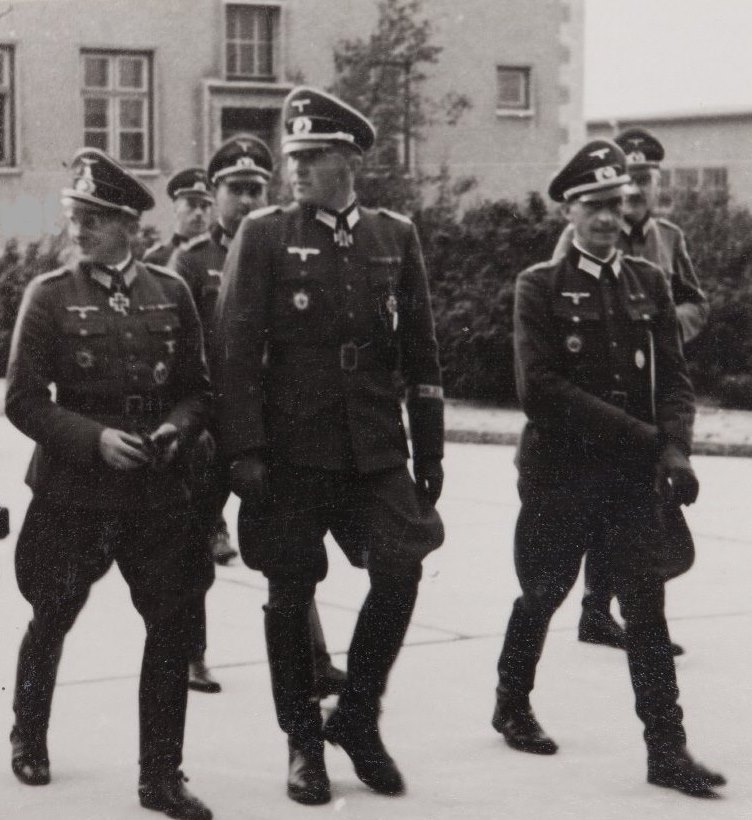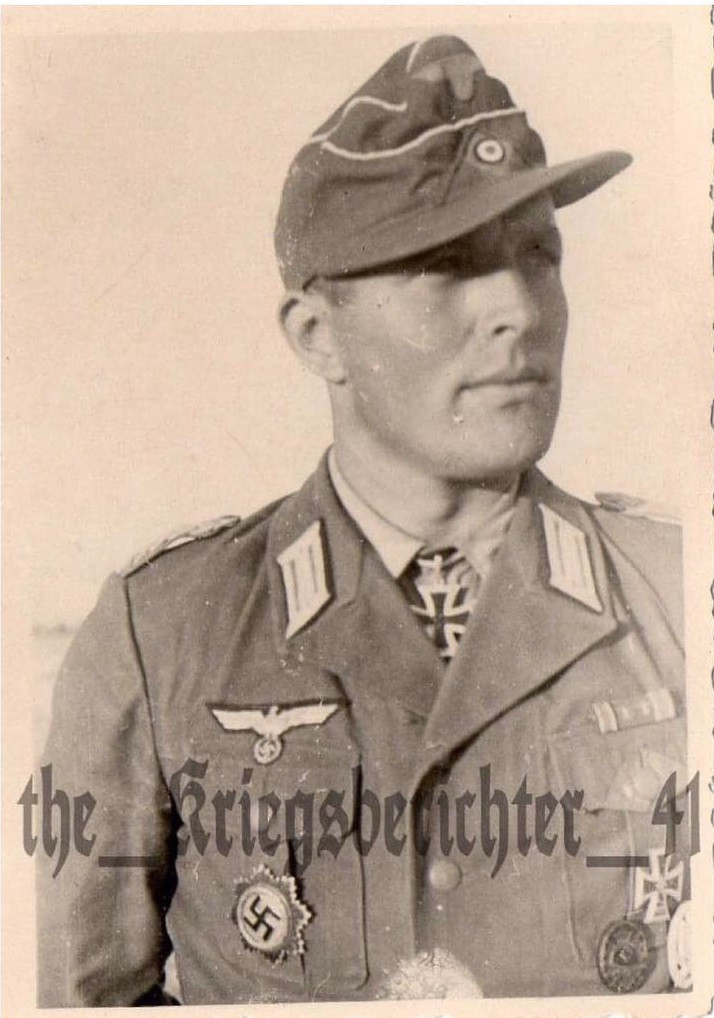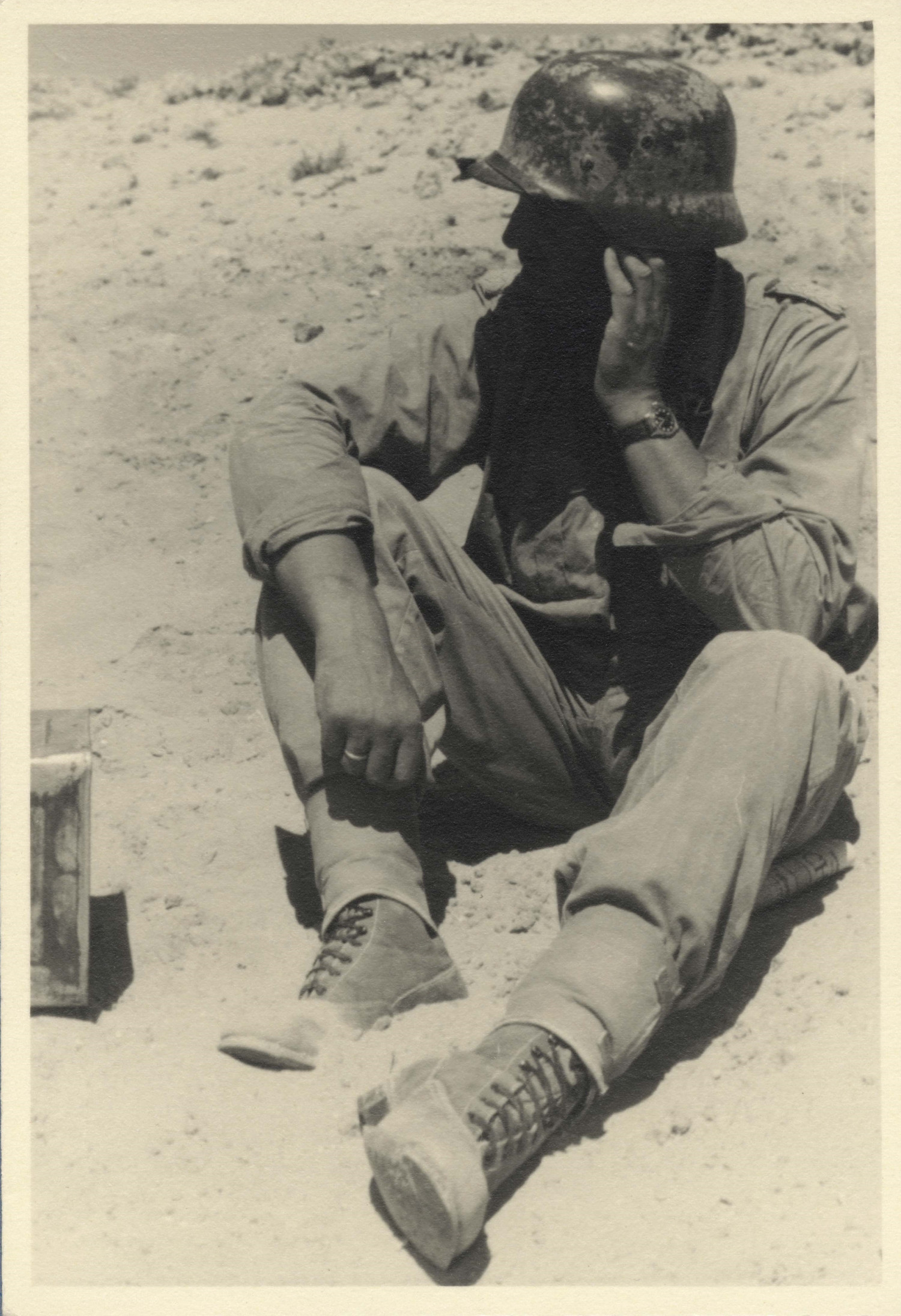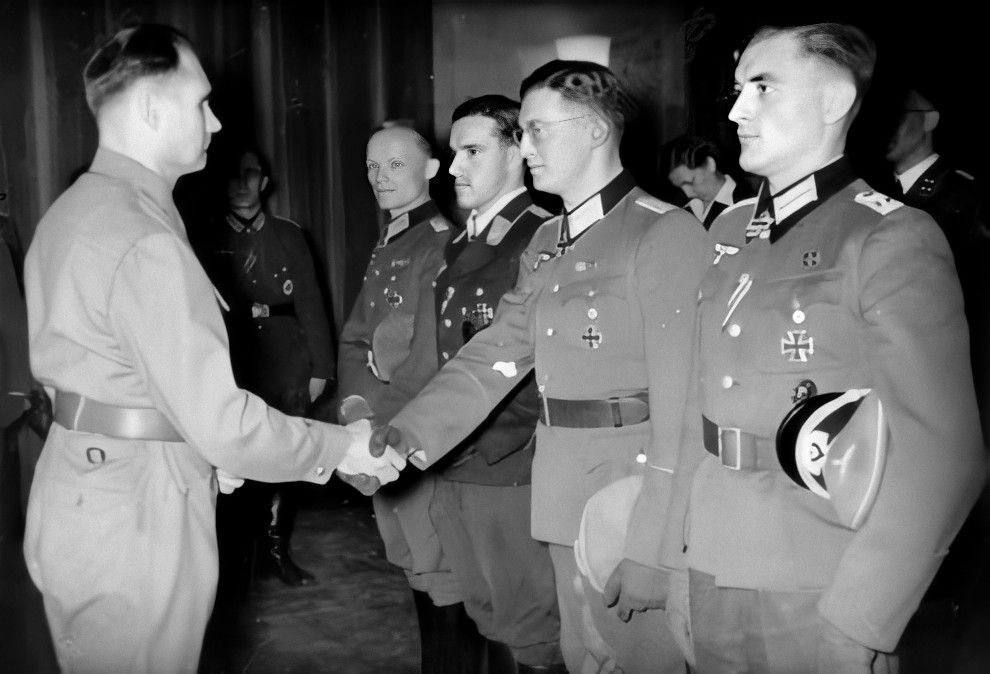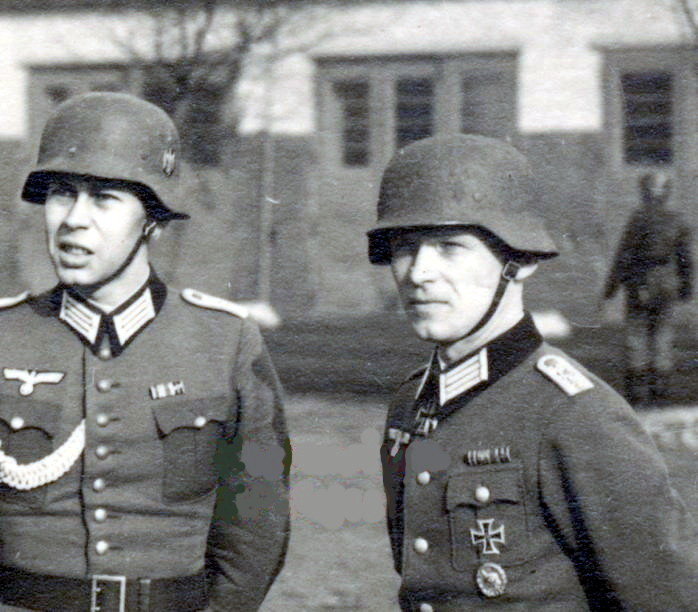Following you will find 'Personalized' daggers from my collection. Whenever I find a dagger
with a service member's name engraved on it, I attempt to try and find as much information
I possibly can about the man and hopefully find a picture or two to somehow show the viewer
that there is a face beyond just a picture of the personal artifact that was once in their possession.
The owner of this dagger was first an enlisted man in the RAD, then became an officer in the RAD. At some point, he was promoted as a Leutnant into the Army. After the war, he was imprisoned in Russia for over four years. Upon his release, he returned to Dusseldorf where he eventually became a teacher. He served as a Bürgermeister in Menden, Germany, from 1979-1984. (Currently in the collection of the author of this website)
Click on picture to see a larger view.
Ernst in his Army Uniform. Here he was a Leutnant. Note that he was the recipient of the Iron Cross, 2d Class,
his certificate is shown
at right.
Ernst shown in Berlin.
Ernst shown with his wife, Lilo and son.
Ernst's ID Book.
Ernst Eisenberg as he appeared when he was the Bürgermeister of Menden, Germany, during the period 1979 thru 1984.
Ernst in His RAD uniform. This picture probably came from his service records. His rank insignia is that of a Obertruppführer.
Ernst's Signature from a letter he sent to me in 1986.
Ernst's Soldbuch
All photos shown are courtesy of Katrin Eisenberg Rombaut, his granddaughter who lives in Menden, Germany.
RAD
Personalized Third Reich Daggers
Georg Briel's Dagger Display
(Click for larger view)
Briel with Field Marshal Rommel
Closeup of Briel's Dagger
Briel shown with Hans Klarmann (L) and Erich Nürnberger (R), both of whom were later killed in action in Russia .
Oberstleutnant Georg Briel served in the Afrika Korps where he won his Knight's Cross.
August 21, 1907 - May 16, 1980
Walther at about 90.
Walther (L) is seen here with Oberstlt Max Wandrey and Gen der Fliegler Helmuth Felmy, 9 January 1944.
Walther's dagger plus awards he had received.
(Click for larger view)
27Jan 1910 - 25 Nov 2010
He was awarded his Knight's Cross on 24 Jun 1940
Ernst Eisenberg at a 2-4 September 1983 opening ceremonies of 123People.de, a German search engine.
Briel shown with his Knights Cross Conversing with an unindentified officer in Western Desert of North Afrika about July 1942.
(with thanks to Paul E. now in my collection)
Briel being awarded the Italian Medaglia d'argento al valor militare
Briel with a baby which
could be his son.
Wilhelm Walther (L) with
Hauptmann Helmut Pinkert (R).
kegan32
Briel (L) Friedrich Herrmann (M), and unidentified officer (R).
George Briel was the commander of the 606th Army Flak Battalion, a part of the Afrika Korps which Rommel liked to use as an antitank unit withe the forward troops. He was born in Ellers, in the Fulda District, in 1907, and joined the police in 1927. He trained at the Muenden Police Academy and transferred to the Kassel Police Department in 1929. By 1934, he was a second lieutenant of police. He was inducted into the army as a first lieutenant in 1935 and became adjutant of the 2d Motorized Machine Gun Battalion. Subsequently he was a company commander in the 66th Anti-Aircraft Machine Gun Battalion. Promoted to captain in 1938, he assumed command of the 606th in 1941, and became a major in 1942. He was awarded the Knight's Cross for shooting up a French breakout attempt at Bir Hacheim. He later commanded the 200th Panzer Grenadier (formerly Rifle) Regiment in Tunisia but fell seriously ill and returned to Europe. A lieutenant colonel in 1945, he commanded a grenadier regiment in the 79th Volksgrenadier Division on the Western Front until he was wounded again in the last weeks of the war. He was in a hospital in Erlangen when Germany surrendered.
Awards and Decorations
• Iron Cross
2nd Class (22 September 1939)
1st Class (30 August 1940)
• Wound Badge in Black (3 February 1942)
• West Wall Medal (20 March 1940)
• General Assault Badge (15 January 1942)
• Heeres-Flakabzeichen (27 April 1943)
• Silver Medal of Military Valor (18 February 1942)
• German Cross in Gold (14 February 1942)
• Knight's Cross of the Iron Cross on 23 July 1942 as
Major and Commander of Heeres-Flak-Batallion 606
• Ärmelband Afrika (12 April 1943)
World War 2 Battles
• Invasion of Poland
• Battle of France
• North African Campaign
• Battle of Bir Hakeim
• Battle of the Bulge
Iron Cross 2d Class Award Document
In this series of three pictures, August 1942, we see a relaxed Georg Briel.
Collection
of kegan32
Briel, center, as Commander of the Infantry School in Greifswald, 1944. On Briel's right is
Obst Joachim von Stolzmann
Right after the war was over, Walther was arrested and tried and sentenced to death. However, the sentence was never carried out and he lived to be 100 dying in 2010.
Courtesy of Mike Seager Thomas
The Kriegsbericher_41
Deputy Führer and Reishsminister Rudolph Hess, on the occasion of the 15th Anniversary Of the German Nationalist Student Bund greeting from left Wilhelm Walther, Helmet Ringler, Fritz Steger, and Franz Berger of the German Armed Forces, all holders of the Knight's Cross and all of whom had been members of the NSD-Studentenbund, in Munich, 27th January 1941.
Funeral of Georg Briel, May 1980, Brakel, Germany
Walther (R) with unidentified officer.
Above is the cover of a new book recently published by Mr. Anthony Rogers. Mr. Rogers personally knew Wilhelm Walther and interviewed him in his home where Mr. Walther showed him his scrapbook filled with wartime photos. After Mr. Walther's death, his son let Mr. Rogers copy and publish the photos contained in the scrap book. There are some amazing photos in it along with an Introduction by Mr. Rogers and a short Bio of Mr. Walther and highly recommend purchasing it.
ISBN 1784387150, price in US is $22.95.
